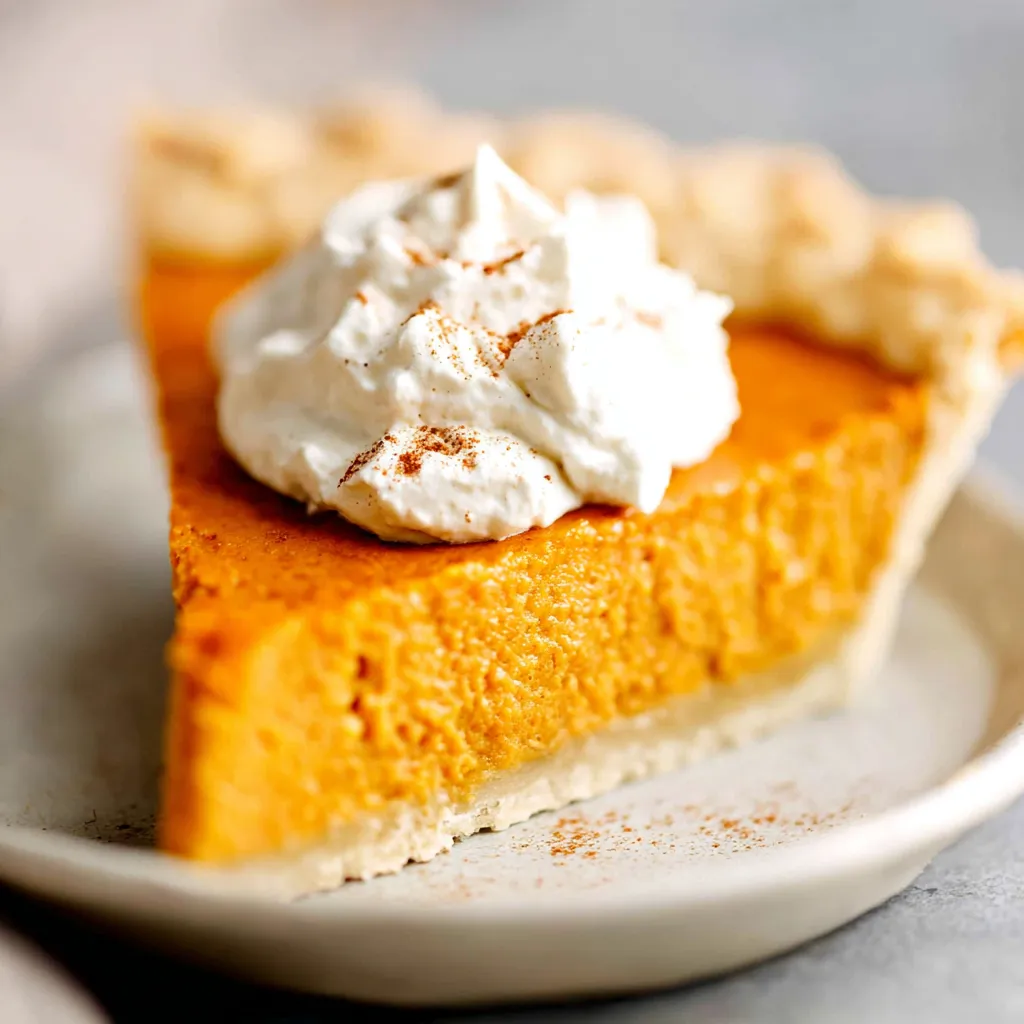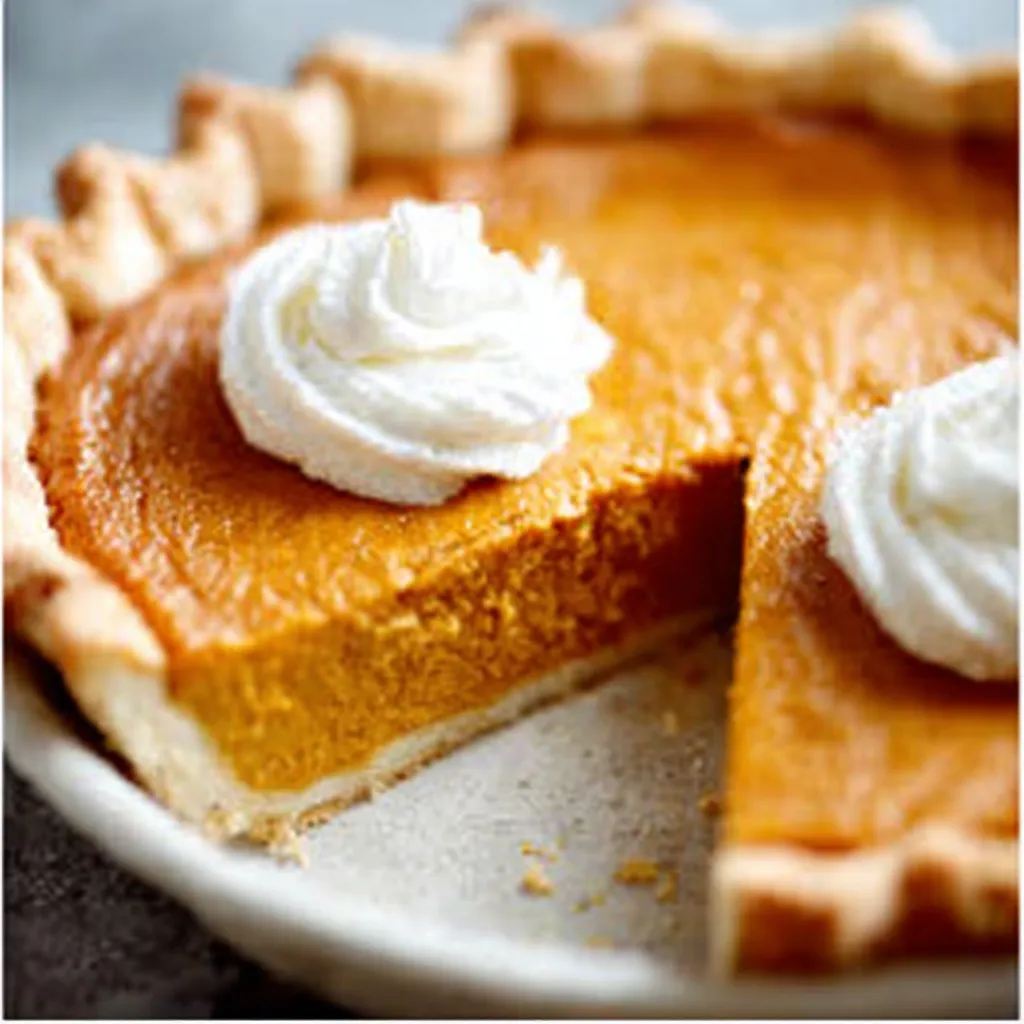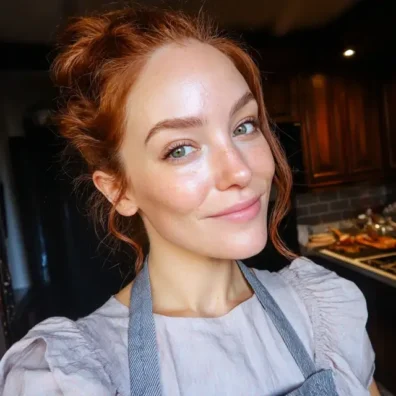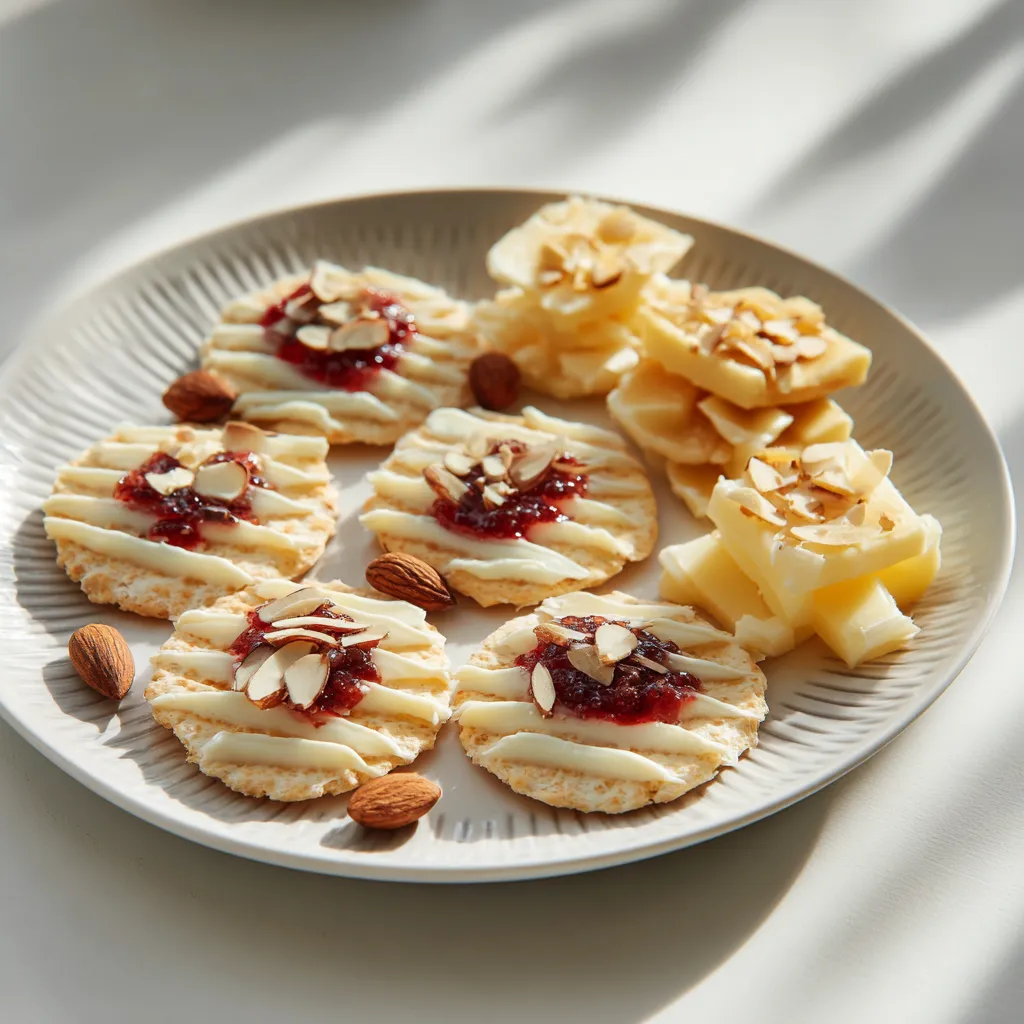Decoding the Pumpkin Pie Puzzle: A Scientific Approach
 The magic of pumpkin pie lies in the delicate balance of its ingredients and the chemical reactions that occur during baking. Pumpkin puree, primarily composed of water and carbohydrates, provides the foundation. However, on its own, it lacks structure. Eggs act as the binding agent, their proteins coagulating with heat to solidify the filling. Sugar not only sweetens but also influences the texture, preventing the filling from becoming too firm. Spices, the aromatic heart of the pie, contribute complex flavor profiles, with cinnamon, nutmeg, ginger, and cloves being the usual suspects. The crust, often overlooked, is just as crucial. A good crust should be tender and flaky, providing a textural contrast to the smooth filling. Gluten development is key here; overworking the dough leads to a tough crust, while underworking results in a crumbly one that falls apart. Blind baking the crust ensures it’s crisp and prevents a soggy bottom. The water content of the pumpkin puree is a significant factor in the pie’s overall consistency; too much water, and you’ll end up with a soupy mess. Pre-cooking or draining the puree can help mitigate this issue. Also, the baking temperature plays a vital role. A low and slow bake allows the filling to set evenly, minimizing cracks and creating a smooth, creamy texture.
The magic of pumpkin pie lies in the delicate balance of its ingredients and the chemical reactions that occur during baking. Pumpkin puree, primarily composed of water and carbohydrates, provides the foundation. However, on its own, it lacks structure. Eggs act as the binding agent, their proteins coagulating with heat to solidify the filling. Sugar not only sweetens but also influences the texture, preventing the filling from becoming too firm. Spices, the aromatic heart of the pie, contribute complex flavor profiles, with cinnamon, nutmeg, ginger, and cloves being the usual suspects. The crust, often overlooked, is just as crucial. A good crust should be tender and flaky, providing a textural contrast to the smooth filling. Gluten development is key here; overworking the dough leads to a tough crust, while underworking results in a crumbly one that falls apart. Blind baking the crust ensures it’s crisp and prevents a soggy bottom. The water content of the pumpkin puree is a significant factor in the pie’s overall consistency; too much water, and you’ll end up with a soupy mess. Pre-cooking or draining the puree can help mitigate this issue. Also, the baking temperature plays a vital role. A low and slow bake allows the filling to set evenly, minimizing cracks and creating a smooth, creamy texture.
The Ultimate Pumpkin Pie Recipe: A Culinary Blueprint
Here’s a recipe I’ve meticulously crafted through countless iterations, incorporating the scientific principles discussed above.Ingredients:
- For the Crust:
- 1 1/4 cups all-purpose flour
- 1/2 teaspoon salt
- 1/2 cup (1 stick) cold unsalted butter, cut into cubes
- 1/4 cup cold vegetable shortening, cut into cubes
- 4-6 tablespoons ice water
- For the Filling:
- 1 (15-ounce) can pumpkin puree (not pumpkin pie filling)
- 1 cup heavy cream
- 1/2 cup whole milk
- 3 large eggs
- 3/4 cup packed light brown sugar
- 1/4 cup granulated sugar
- 1 teaspoon ground cinnamon
- 1/2 teaspoon ground ginger
- 1/4 teaspoon ground cloves
- 1/4 teaspoon ground nutmeg
- 1/2 teaspoon salt
- 1 teaspoon vanilla extract
Instructions:
- Make the Crust:
- In a large bowl, whisk together the flour and salt.
- Cut in the butter and shortening using a pastry blender or your fingers until the mixture resembles coarse crumbs.
- Gradually add the ice water, 1 tablespoon at a time, mixing until the dough just comes together.
- Form the dough into a disk, wrap in plastic wrap, and chill for at least 30 minutes.
- On a lightly floured surface, roll out the dough into a 12-inch circle.
- Transfer the dough to a 9-inch pie plate, trim the edges, and crimp.
- Prick the bottom of the crust with a fork.
- Chill the crust for another 30 minutes.
- Blind Bake the Crust:
- Preheat oven to 375°F (190°C).
- Line the crust with parchment paper and fill with pie weights or dried beans.
- Bake for 20 minutes.
- Remove the parchment paper and weights, and bake for another 5-10 minutes, or until the crust is lightly golden brown.
- Let the crust cool completely.
- Make the Filling:
- In a large bowl, whisk together the pumpkin puree, heavy cream, milk, eggs, brown sugar, granulated sugar, cinnamon, ginger, cloves, nutmeg, salt, and vanilla extract until smooth.
- Bake the Pie:
- Preheat oven to 350°F (175°C).
- Pour the filling into the cooled crust.
- Bake for 50-60 minutes, or until the filling is set but still slightly jiggly in the center.
- Let the pie cool completely on a wire rack.
- Refrigerate for at least 4 hours before serving.
Confessions of a Pumpkin Pie Perfectionist: My Quest for the Perfect Slice
My first few attempts were a disaster. I remember one Thanksgiving where my pumpkin pie filling resembled soup, and the crust was tougher than shoe leather. It was a humbling experience, to say the least. Like many of you, I initially thought that using canned pumpkin pie filling was the easy route to success. Wrong! That shortcut often resulted in a pie that was overly sweet and lacking in depth of flavor. Then, I had an “Aha!” moment when I started experimenting with different types of pumpkin puree. Using fresh pumpkin puree from a sugar pumpkin I roasted myself yielded a much more nuanced and earthy flavor. However, dealing with the excess moisture became a new challenge.The Soggy Bottom Blues
Oh, the dreaded soggy bottom! It plagued my early pies like a persistent ghost. I tried everything – pre-baking the crust (which helped, but not enough), adding a layer of melted chocolate to the bottom (interesting, but not the classic flavor I was after), even praying to the pie gods. The solution, as it turned out, was a combination of things: blind baking the crust properly, and carefully managing the moisture content of the pumpkin filling.Spice Up Your Life (and Your Pie)
The spice blend is where pumpkin pie truly sings. Initially, I used pre-mixed pumpkin pie spice, but I found the flavors to be rather bland and one-dimensional. Experimenting with individual spices – cinnamon, ginger, cloves, nutmeg – allowed me to customize the flavor profile to my liking. I discovered that freshly grated nutmeg makes a world of difference, adding a warm, nutty aroma that elevates the entire pie. Finding the perfect balance was key; too much of any one spice could easily overpower the delicate pumpkin flavor. This journey reminded me of the time I was trying to perfect Chocolate Pecan Pie, and how crucial ingredient balance was there as well.The Great Sugar Showdown
The type and amount of sugar used also significantly impacted the pie’s texture and flavor. Granulated sugar alone resulted in a filling that was too firm and slightly grainy. Light brown sugar, on the other hand, added a subtle molasses flavor and created a smoother, creamier texture. I found that a combination of both – brown sugar for flavor and granulated sugar for structure – produced the best results. This was a similar challenge to nailing the right sweetness in Sweet Potato Casserole.The Custard Conundrum: Cracks and Jiggles
Achieving a perfectly smooth, crack-free surface was my ultimate goal. I tried various baking temperatures and techniques, from baking the pie in a water bath (too fussy) to covering it with foil during the first half of baking (slightly better, but still not perfect). The key, I discovered, was low and slow baking. A lower oven temperature (350°F) allowed the filling to set evenly, minimizing cracks and preventing the edges from overcooking. Also, leaving a slight jiggle in the center when I took the pie out of the oven ensured that it would set perfectly as it cooled. Getting that perfect custard texture reminded me of the patience required when making an Apple Crumble Cheesecake.The Secret to Pumpkin Pie Perfection: A Foolproof Method
Here’s a step-by-step guide to baking the perfect pumpkin pie, based on everything I’ve learned:- Start with a quality crust: Use a homemade crust for the best flavor and texture. Chill the dough thoroughly before rolling it out and blind baking it.
- Pre-bake your pie crust. This will ensure it doesn’t get soggy.
- Roast your own pumpkin (optional): For a truly exceptional pie, roast a sugar pumpkin and make your own puree. Drain off any excess moisture.
- Use a blend of sugars: Combine light brown sugar and granulated sugar for optimal flavor and texture.
- Don’t skimp on the spices: Use fresh, high-quality spices and adjust the amounts to your liking. Freshly grated nutmeg is a must!
- Bake low and slow: Bake the pie at 350°F (175°C) for 50-60 minutes, or until the filling is set but still slightly jiggly in the center.
- Cool completely: Let the pie cool completely on a wire rack before refrigerating. This allows the filling to set properly.
- Chill before serving: Refrigerate the pie for at least 4 hours before serving. This will enhance the flavor and texture.
Why is it important to blind bake the crust?
Blind baking the crust ensures it’s crisp and prevents a soggy bottom.
What’s the best way to avoid cracks in the pumpkin pie filling?
Bake the pie at a low temperature (350°F/175°C) to allow the filling to set evenly, and don’t overbake it. Leave a slight jiggle in the center when you take it out of the oven.
Why does the recipe call for both brown sugar and granulated sugar?
Brown sugar adds a subtle molasses flavor and creates a smoother, creamier texture, while granulated sugar provides structure to the filling. The combination of both produces the best results.
Is it necessary to use canned pumpkin puree, or can I use fresh pumpkin?
You can use fresh pumpkin puree from a sugar pumpkin, which yields a more nuanced and earthy flavor. However, you need to drain off any excess moisture from the puree.

Perfect Pumpkin Pie
Ingredients
Equipment
Method
- In a large bowl, whisk together the flour and salt.
- Cut in the butter and shortening using a pastry blender or your fingers until the mixture resembles coarse crumbs.
- Gradually add the ice water, 1 tablespoon at a time, mixing until the dough just comes together.
- Form the dough into a disk, wrap in plastic wrap, and chill for at least 30 minutes.
- On a lightly floured surface, roll out the dough into a 12-inch circle.
- Transfer the dough to a 9-inch pie plate, trim the edges, and crimp.
- Prick the bottom of the crust with a fork.
- Chill the crust for another 30 minutes.
- Preheat oven to 375°F (190°C).
- Line the crust with parchment paper and fill with pie weights or dried beans.
- Bake for 20 minutes.
- Remove the parchment paper and weights, and bake for another 5-10 minutes, or until the crust is lightly golden brown.
- Let the crust cool completely.
- In a large bowl, whisk together the pumpkin puree, heavy cream, milk, eggs, brown sugar, granulated sugar, cinnamon, ginger, cloves, nutmeg, salt, and vanilla extract until smooth.
- Preheat oven to 350°F (175°C).
- Pour the filling into the cooled crust.
- Bake for 50-60 minutes, or until the filling is set but still slightly jiggly in the center.
- Let the pie cool completely on a wire rack.
- Refrigerate for at least 4 hours before serving.




